You’ve got to hand it to the Japanese; always coming up with pragmatic solutions to problems. You’re having a walk in Tokyo and you’re thirsty? Grab a cold bottle of water from the vending machines you’ll find everywhere. Rainy day? Open up the umbrella you’re carrying. Just like most everyone else’s, it’s see-through, so you can make your way through the masses on the sidewalks without bumping into anyone. Simple. And those are just two of the countless observations I made during my blindingly fast visit to Tokyo.
If you’ve followed my stories, you’ll know that I traveled to Tokyo on ANA-All Nippon Airways’ inaugural flight from Vancouver (YVR) to Haneda (HND). There was a gate event at YVR for the inbound flight, ANA’s first-ever service to Canada. My flight to Tokyo was great, and then I was honored to watch ANA’s New Employee Ceremony in a hangar at HND, with ANA’s last 747-400D as a backdrop.
It was Tuesday afternoon, and I had split off from our media group to explore HND. I had heard that there was great plane spotting, and I wanted to see what the Japanese airport designers had done in the terminals. But first, a bit of background and a look at the layout of HND.
With the opening of Narita Airport (NRT) in 1978, Tokyo International Airport ’“ Haneda, was relegated to domestic flights only. Narita took over all international traffic. However, international flights returned to HND in 2010, with the opening of a new International Terminal, along with the completion of a fourth runway.
Initially, international flights were limited to overnight arrivals, but daytime arrival slots were opened last fall. So, as well as being ANA’s and Japan Airlines’ main Tokyo airport for domestic flights, HND is seeing service from Lufthansa, British Airways, Air France, Emirates, and Hawaiian, among other carriers. HND is much closer to downtown Tokyo than NRT, and passengers benefit from HND’s quick transit links.
If you have a look at this satellite image from Google Earth, you’ll see HND’s terminal and runway configuration. I’ve labeled the three terminals. This image is a bit old, and the International Terminal has been expanded with a new wing since it was taken. T1 is Japan Airlines’ main terminal, and T2 is used primarily by ANA.
HND has four runways ’“ you can see the two main parallel runways, 34L/16R and 34R/16L, pretty clearly. At the top of the image, you can see the threshold of Runway 04. You can’t see the newest runway, 05/23, which was built on man-made island at the south end of the airport.
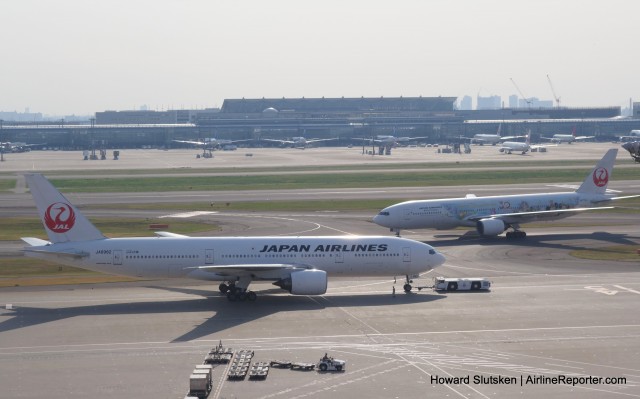
JAL 777s on the T1 ramp, with HND’s International Terminal in the background. Main Runway 34L/16R is behind the “Disney” 777.
All three terminals have observation decks, and I’ve labelled them with a star. You can see that you’ll have great views of the ramps of each terminal from the decks. You can also see the full length of the main parallel runways, so you can easily watch landings and takeoffs. If you’re taking photos, I figure you’ll need at least a 250mm, maybe a 300mm lens to get a crisp shot of traffic on the runway.
I had my pocketable Sony RX100M2 travel camera with me, and it has a great processor and optics. I was able to get some great shots of the ramp, but the runway images are a bit fuzzy.
The observation decks are remarkable. They’re accessed from the top of the shopping and restaurant Marketplace in each terminal (make sure you go to the great 12-seat tempura restaurant on the top floor of T2). There’s one main deck in the International Terminal, while T1 and T2 both have north and south observation wings.
The decks are huge. There are plenty of seating areas and telescopes to use, and the views are great. You can even get something to eat at a snack bar. But I was most impressed by how the designers handled safety on the deck.
Instead of a chain-link fence, the decks all have large cables running horizontally between supports. Have you ever tried to get a good photo through a chain-link fence? Not so easy. On HND’s decks, there’s more than enough space between the cables for your camera’s lens. Japanese solutions, at work!
T2’s deck has views of downtown Tokyo to the northeast. If I was to spend a day at HND, I’d move from terminal to terminal, following the sun to get the best viewing and shots.
Plane watchers will have to remember that HND is still primarily a Japanese domestic airport. Yes, you’ll see a few international carriers, but most of the time you’ll say ’œOh, look, another ANA 777-200.” But there’s lots of air-side activity, and you’ll have fun with all of the other spectators, families, and travelers on the decks.
There’s one other neat viewing spot at HND that I didn’t get to. Have a look at the map, and you’ll see a star just south of T1. That’s the Shin Siebijo station of the Tokyo Monorail, close to HND’s support facilities and hangars. It’s also really close to one of taxiways connecting the two parallel runways. It’ll cost you either 160 or 200 yen (about $1.60 or $2.00) to get to the station from the terminals.
But a monorail?? Well, that’s for the next story…
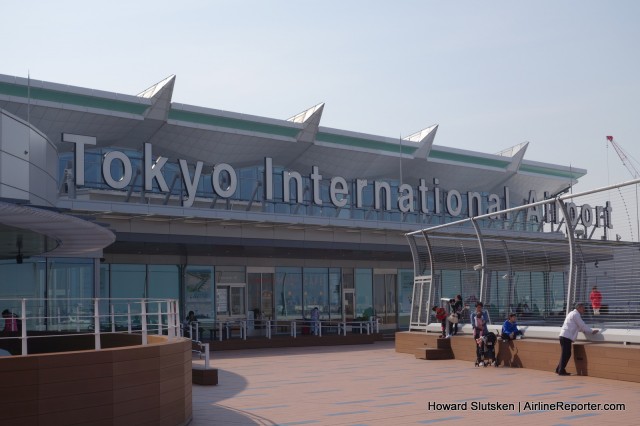
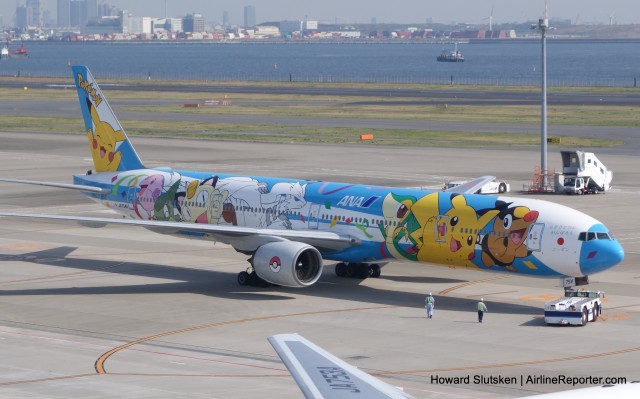
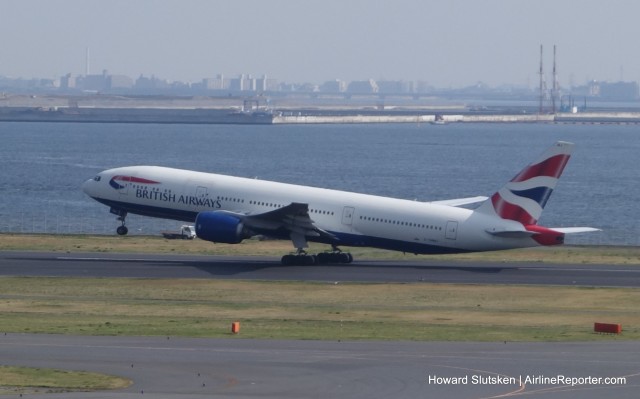
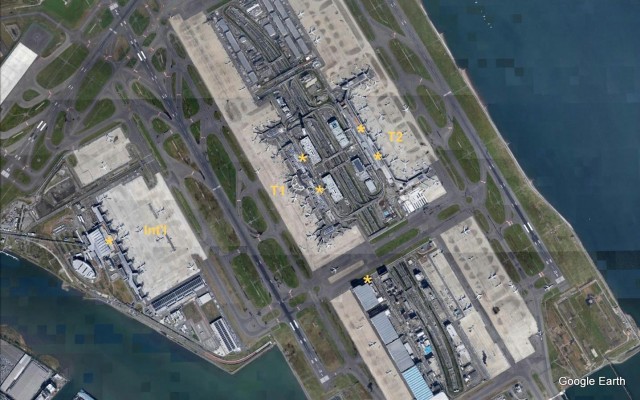
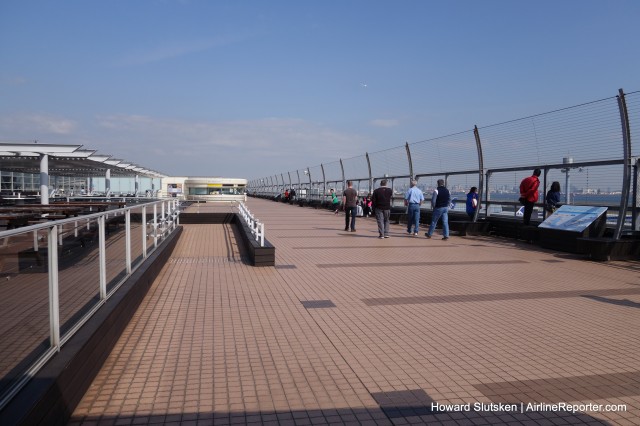
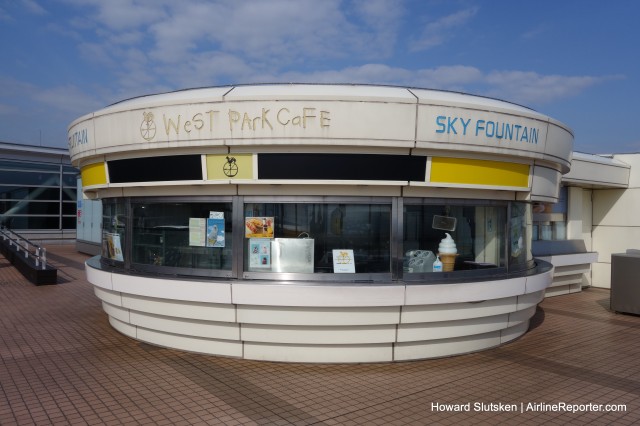
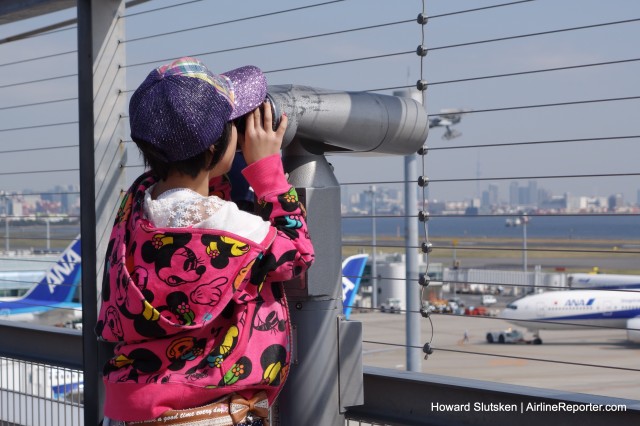
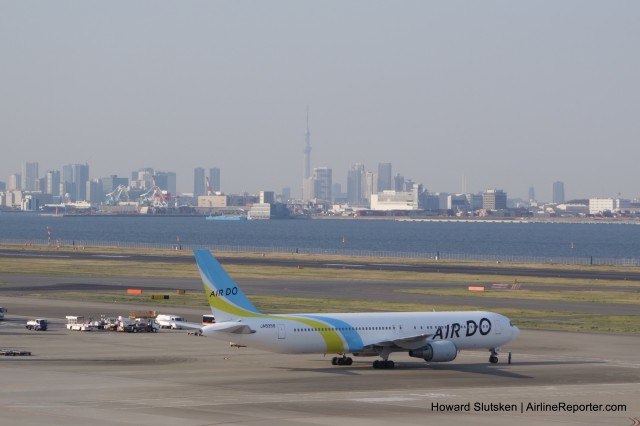
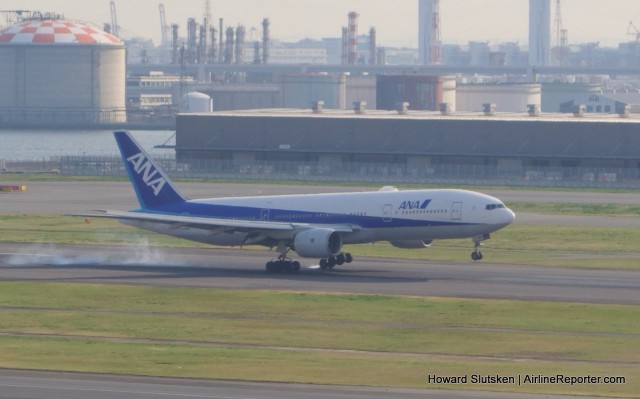
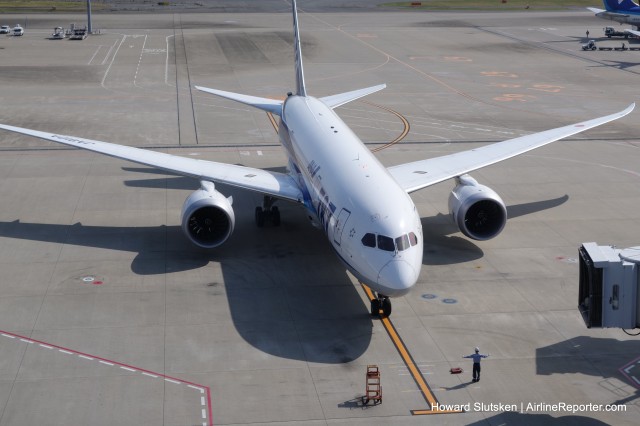
I would love to spend a day doing that. Does anyone know if there’s any good spotting at Sea-Tac while waiting for a flight?
The Foodcourt has some good views, but unfortunately there is glass to contend with. Nothing as good as HND or NRT observation decks.
What a novel idea! Some people like to watch planes (yes, yes, we know we’re dorks), so let’s build a nice observation deck. I wish more airports in the US did this.
Well done Howard, I’ve been to Haneda but never looked at this way. I look forward to my next trip through and take the opportunity to really see it!
everyone has the thing they love, whether its Planes, Trains or Automobiles. Howard brings the info to the hobby and the hobby to us.
A great ‘geekport,’ Howard and thanks. The only part that confounds me is why Japan’s principal DOMESTIC airport, one with virtually not international traffic until recently, continues to label them selves and their principal public function primarily in English. A bit unusual for a ‘foreign,’ ‘domestic’ airport. Push me just a little and I’ll learn to read basic informative signs in Japanese. Even the banner sign and the snack bar marking are English. Am I missing something? Especially in a primarily domestic airport, I’d expect English to be secondary and perhaps poorly spelled “Engrish.” Do the English-speaking parts of North Amerika have to dominate even foreign ‘domestic’ airports. Visiting Japan is great fun, but when it feels no different from San Francisco or Vancouver, or Los Angeles, why bother? Still, a fun report and thanks. NFZ
I asked a similar once on a different aviation forum why in the past,ANA had Japanese script for All Nippon on their airplanes,and JAL had all Japanese on their domestic airplanes(eg.B727) and was told it was more “exotic” or appealing,or words to that effect,to have English.
@manuel: Thank you. That is a different an interesting perspective, one that sort of noted, but dismissed. Understanding signs and markers in an unfamiliar language – let alone an alphabet or character set is a challenge for all of us. Perhaps some signs are better understood and followed by many folks when posted in.. N
This was an interesting report of Haneda Airport. What is the best time of day to observer air traffic here?
Hi Aron, thanks! If you’re just there to watch the action, I’d say go to the T1 deck most anytime. You’ll be able to watch traffic landing on the main runway and the activity on the JAL T1 ramp. If you’re hoping to get photos and want to keep the sun behind you, start at T1 in the morning, then T2 or the International Terminal in the afternoon.
Does anyone know if it is possible to access the viewing deck even if you don’t have a flight from Haneda?
Dear DTWFlyer,
Yes, you can! Pick your terminal, go to the shopping area in the middle of the terminal, take the escalators up, and you’ll easily access the observation decks.
Have fun!
Howard
hi i’m going to hnd & nrt in june 2017. is it possible to read off reg,S from T1 @ HND